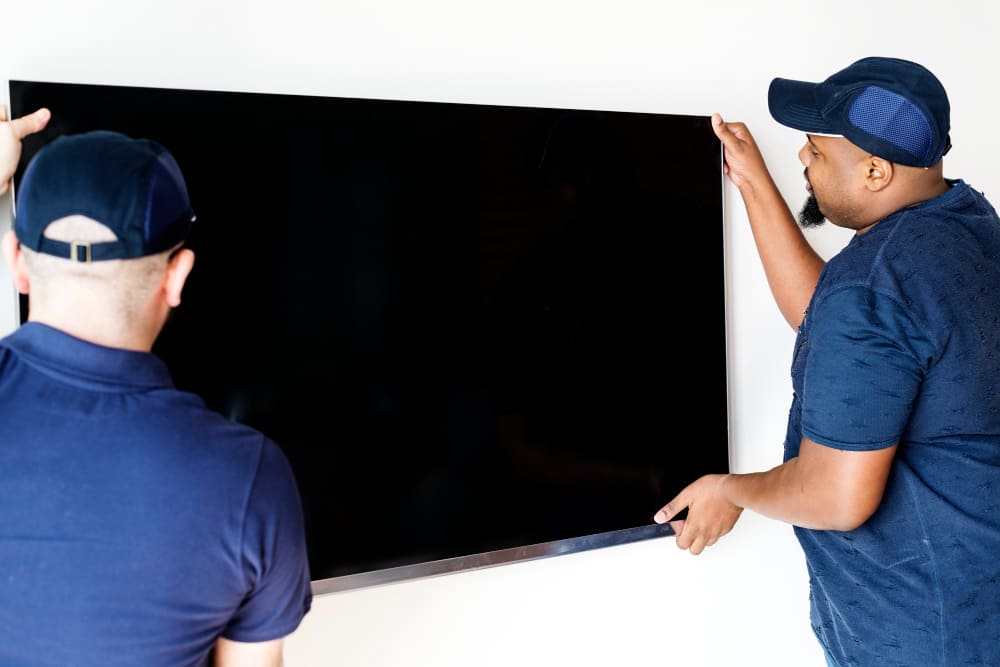When it comes to mounting your TV, choosing the right type of wall mount can significantly impact your viewing experience and room aesthetics. The three main types of TV mounts are fixed, tilt, and full-motion mounts. Each offers different levels of adjustability, installation complexity, and price points. This guide will help you understand the differences and decide which mount suits your needs best.
Types of TV Mounts
1. Fixed TV Mounts
Description: A fixed mount holds your TV flat against the wall without any movement.
Advantages:
Slim profile, keeping the TV close to the wall (often less than 2 inches).
Usually the most affordable option.
Simple and quick to install.
Ideal for rooms where the viewing angle is consistent.
Disadvantages:
No flexibility to adjust the TV angle after installation.
Can cause glare if the TV is mounted too high or in direct light.
Best for: Viewers who want a clean, minimalist look and have a fixed seating arrangement136.
2. Tilt TV Mounts
Description: Tilt mounts allow you to angle the TV vertically, usually tilting downward to reduce glare and improve viewing comfort.
Advantages:
Helps reduce glare from windows or lights.
Allows better viewing if the TV is mounted higher than eye level, such as above a fireplace.
Still sits relatively close to the wall (around 2 inches).
Slightly more expensive than fixed mounts but still affordable.
Disadvantages:
Limited movement—only tilts up and down.
Cannot swivel or extend away from the wall.
Best for: Rooms where the TV is mounted higher than eye level or where glare is an issue145.
3. Full-Motion TV Mounts (Articulating Mounts)
Description: Full-motion mounts offer the most versatility, allowing you to tilt, swivel, extend, and sometimes rotate the TV.
Advantages:
Can extend the TV away from the wall (up to 20-28 inches or more).
Swivel left and right, ideal for corner mounting or multiple seating areas.
Tilt to reduce glare and optimize viewing angle.
Allows easy access to TV ports and cables.
Can push back flat against the wall when not extended.
Disadvantages:
Usually the most expensive option.
Bulkier profile, even when pushed flat.
Slightly more complex installation.
Best for: Multi-purpose rooms, corner installations, or households wanting maximum flexibility in viewing angles and positions1
| Feature | Fixed Mount | Tilt Mount | Full-Motion Mount |
|---|---|---|---|
| Movement | None | Tilts up/down | Tilt, swivel, extend |
| Distance from Wall | Very close (~1-2 inches) | Close (~2 inches) | Further away (up to 28″) |
| Installation Time | Quick (under 20 mins) | Moderate | Longer (up to 30 mins) |
| Price Range | Lowest | Moderate | Highest |
| Best Use Case | Fixed viewing position | High mounting, glare issues | Multiple viewing angles |
FAQs
Q1: Can I mount any TV with these mounts?
Most mounts support a range of TV sizes and weights. Always check the VESA pattern and weight limit compatibility before purchasing36.
Q2: Is it difficult to install a full-motion mount?
Full-motion mounts take a bit longer to install due to their complexity, but with proper tools and instructions, many DIYers can handle it. Professional installation is also an option25.
Q3: Will a full-motion mount damage my wall more than a fixed mount?
Full-motion mounts exert more leverage on the wall, so it’s important to mount them on studs or solid surfaces to ensure stability and safety46.
Q4: Can I use a tilt mount if my TV is mounted above a fireplace?
Yes, tilt mounts are ideal for above-fireplace installations because they allow you to angle the TV downward for comfortable viewing14.
Q5: How do I hide cables with a full-motion mount?
Many full-motion mounts come with integrated cable management systems, or you can use external cable covers to keep wires organized and out of sight12.
Conclusion
Choosing the best TV mount depends on your room layout, viewing habits, and budget. If you want a sleek, low-profile look and have a fixed viewing position, a fixed mount is perfect. For TVs mounted higher or to combat glare, tilt mounts offer a practical solution. For ultimate flexibility—especially in multi-use rooms or corner setups—a full-motion mount is the best investment despite the higher cost and installation effort.
By understanding these differences, you can confidently select the TV mount that enhances your viewing experience and complements your space.
- Fixed vs Tilt vs Full-Motion TV Mounts: Which One Should You Choose?
- Discover the key differences between fixed, tilt, and full-motion TV mounts to find the perfect fit for your space. This comprehensive guide covers pros, cons, installation tips, and FAQs to help you select the ideal mount for optimal viewing comfort and style.
- tv mounting
Related posts:
 Why Is My Deco Mesh WiFi Slower Than Expected? Step By Step instructions
Why Is My Deco Mesh WiFi Slower Than Expected? Step By Step instructions
 Slow Flashing White Light on WiFi Pod – Explained Easy Setup
Slow Flashing White Light on WiFi Pod – Explained Easy Setup
 Vaporesso Luxe Q2 SE vs. Uwell Caliburn G3 Lite: Which Pod Kit Wins?
Vaporesso Luxe Q2 SE vs. Uwell Caliburn G3 Lite: Which Pod Kit Wins?
 Why Wise Market PK is the Best Place to Buy the iPhone 13 Pro Max in Pakistan
Why Wise Market PK is the Best Place to Buy the iPhone 13 Pro Max in Pakistan
 Used Car Maintenance Checklist Every Buyer Should Know in Pakistan
Used Car Maintenance Checklist Every Buyer Should Know in Pakistan
 Smart Boards vs. Traditional Whiteboards: Why Modern Offices Are Making the Switch
Smart Boards vs. Traditional Whiteboards: Why Modern Offices Are Making the Switch
 Elevate Your Dining Experience: Best Stainless Steel Cutlery Sets in Singapore
Elevate Your Dining Experience: Best Stainless Steel Cutlery Sets in Singapore
 Cisco Authorized Networking and Security Solutions Provided by Sanso Networks
Cisco Authorized Networking and Security Solutions Provided by Sanso Networks







